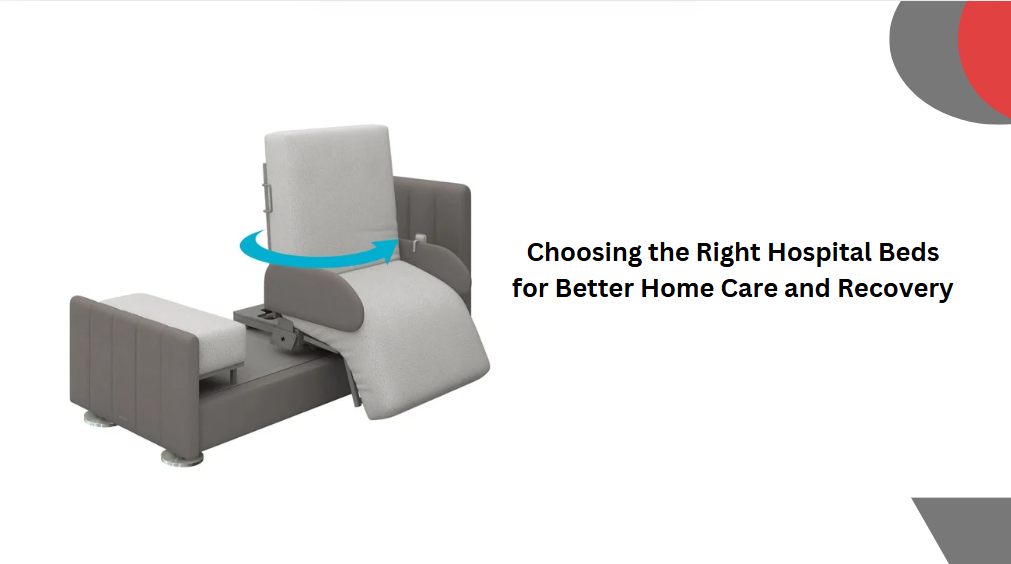When it comes to patient care—whether in a hospital or at home—the bed can make a big difference. Hospital beds are not just ordinary sleeping surfaces; they are medical tools designed to improve comfort, support recovery, and ensure safety for patients and caregivers alike. If you’re exploring hospital beds for home use, understanding your options and what features matter most is essential.
Why Hospital Beds Matter in Home Care
As more families choose to care for their loved ones at home—especially post-surgery or during long-term illnesses—the demand for hospital beds for home use has grown. These beds offer adjustable height, head, and foot positioning, making it easier for patients to rest, eat, and even socialize with minimal physical strain.
More importantly, hospital beds provide caregivers with safer and more ergonomic working conditions. Adjustability allows easier transfers, hygiene routines, and reduces the risk of injury—especially when dealing with non-ambulatory patients or elderly individuals.
Key Features to Look For in a Hospital Bed
Not all hospital beds are the same. Depending on the level of care needed, certain features can make a significant difference in both the patient’s comfort and the caregiver’s convenience.
1. Adjustability
Most modern hospital beds come with electric motors that allow easy adjustment of the head, foot, and overall bed height. This is essential for comfort and therapeutic positioning, especially for patients with respiratory or circulatory issues.
2. Side Rails
Side rails offer safety by preventing falls, especially during sleep or when the patient is disoriented. Some rails also come with built-in controls and padding for additional comfort.
3. Weight Capacity
Ensure that the bed can support the patient’s weight. Bariatric beds are available for heavier patients, offering extra width and reinforced frames.
4. Ease of Operation
Electric hospital beds are often preferred over manual ones for home use. They allow caregivers and patients to make adjustments with the push of a button, minimizing physical strain.
5. Wheels and Locking Mechanism
Mobility can be crucial for rearranging furniture or transporting the patient. Make sure the hospital bed has strong casters with reliable locks to keep it stable during use.
Hospital Beds for Home: A Smart Investment
Whether you’re caring for a senior recovering from surgery or someone with a chronic condition, hospital beds for home can significantly improve quality of life. These beds offer:
- Improved mobility and independence for patients
- Greater safety and support
- Reduced caregiver fatigue
- Better management of medical needs like IVs, feeding tubes, or drainage systems
More than just a piece of equipment, a hospital bed becomes a vital part of a patient’s healing environment. Choosing the right one means better sleep, more dignity, and fewer complications.
Matching the Right Mattress with the Right Bed
When choosing a hospital bed, don’t forget the mattress. The mattress plays a crucial role in preventing bedsores, improving circulation, and providing pressure relief. For patients who are immobile or bedridden for long periods, a low air loss mattress can be a game-changer.
Low air loss mattresses provide a constant flow of air to help manage skin moisture and reduce pressure on sensitive areas of the body. These mattresses are ideal for patients who are at high risk of developing pressure ulcers or who have already experienced skin breakdown.
Renting vs. Buying: What’s Best for You?
Another key consideration is whether to rent or buy a hospital bed. Renting can be a good short-term option for post-operative care or temporary conditions. Buying is often more cost-effective for long-term or permanent medical needs.
When renting, ensure the equipment is from a reliable supplier and comes clean, sanitized, and well-maintained. If you’re buying, look for a durable product with a warranty and good customer support.
How to Choose the Right Supplier
With so many options on the market, choosing a trusted supplier is just as important as selecting the bed itself. Here’s what to look for:
- Reputation: Read online reviews and check ratings with the Better Business Bureau.
- Support: Do they offer setup and maintenance help?
- Insurance Compatibility: Will your insurance cover part or all of the cost?
- Return Policy: Is there a satisfaction guarantee or return window?
Don’t rush your decision. Take time to compare models, prices, and customer service to ensure you get the best value for your money.
Final Thoughts
Investing in a hospital bed for home use is a practical step toward ensuring comfort, safety, and dignity for patients and caregivers alike. With the right features and support, hospital beds can transform a difficult time into a more manageable and even healing experience.
Remember, it’s not just about the bed—it’s about building a space where healing can happen.
And if you’re dealing with patients who spend extended hours in bed, don’t overlook the importance of choosing the right mattress. A low air loss mattress can significantly reduce complications related to immobility and improve overall patient care.






